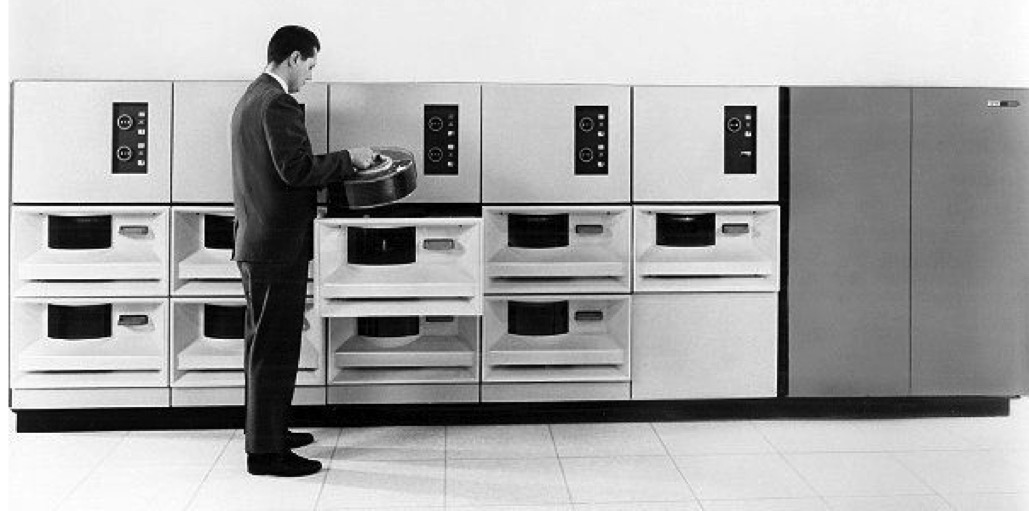
Disk Disaster
Sometimes you’re fortunate enough to be on the periphery of an IT disaster and not the cause of it. Even so it can be excruciatingly painful to watch it’s aftermath.
In about 1975, again while I was working as a Customer Engineer (CE) for IBM in Lima, Ohio, I walked into one of my customers to fix a keypunch, and found myself in the midst of a gaggle of IBM FEs from the Field Engineering Division (FE). They were trying to resolve a problem created by a brand new night operator for the IBM 360 installation.
This customer had a large number of IBM 2314 disk drives, like the ones in the lead image above, and several of these were largely disassembled with their parts laid out on tables and even the floor. I asked one of the other CEs what was happening and he took me aside to tell the story.
That new night operator — on the job for only a few days — had unwittingly caused the chaos unfolding in the data center.
This unlucky person was trying to run the weekly payroll for the company and had mounted the employee disk pack on the spindle specified in the runtime documentation. When he hit the start button on the drive, there was a loud screeching sound that caused him to turn the drive off. Trying to resolve the problem on his own, he then moved the disk pack to the next spindle on the same drive, which also produced the same sounds. So he moved the pack to another spindle, and another, all with the same result.
Then he got the bright idea to try the backup employee data disk pack on the original spindle — which also failed quite spectacularly.
He finally gave up and called his supervisor who rushed in to assess the damage.
By the time I got there, it had been determined that five of the disk drives had been damaged and needed their heads replaced, both copies of the employee data had been destroyed, and the night operator no longer had a job.
IBM has a term for this, “head disk interference,” or HDI. What had happened is that there was a problem on the first spindle. the heads came in direct contact with the spinning disk which damaged both heads and disk. Even small amounts of dust, metal, or dislodged recording medium can cause HDI and so every time he moved the disk to another spindle, the damage to the platters destroyed the heads of the new spindle. And when he put the backup disk pack on the damaged drive the damaged heads destroyed the platters on the backup disk pack.
This makes me thankful that the drives we use today are solidly sealed and damage to a drive can’t be propagated to other drives. And SSDs have no moving parts that can cause such damage.
Of course hard drives still fail and I’ve experienced plenty of those. I haven’t yet had an SSD fail but I have no doubt that it can and will happen.
Do you have an IT disaster story you’d like to share? You can add it to the comments for this article, or you can send it as an article to open@both.org and we will edit and post it. Please follow our Submission and Style guide.